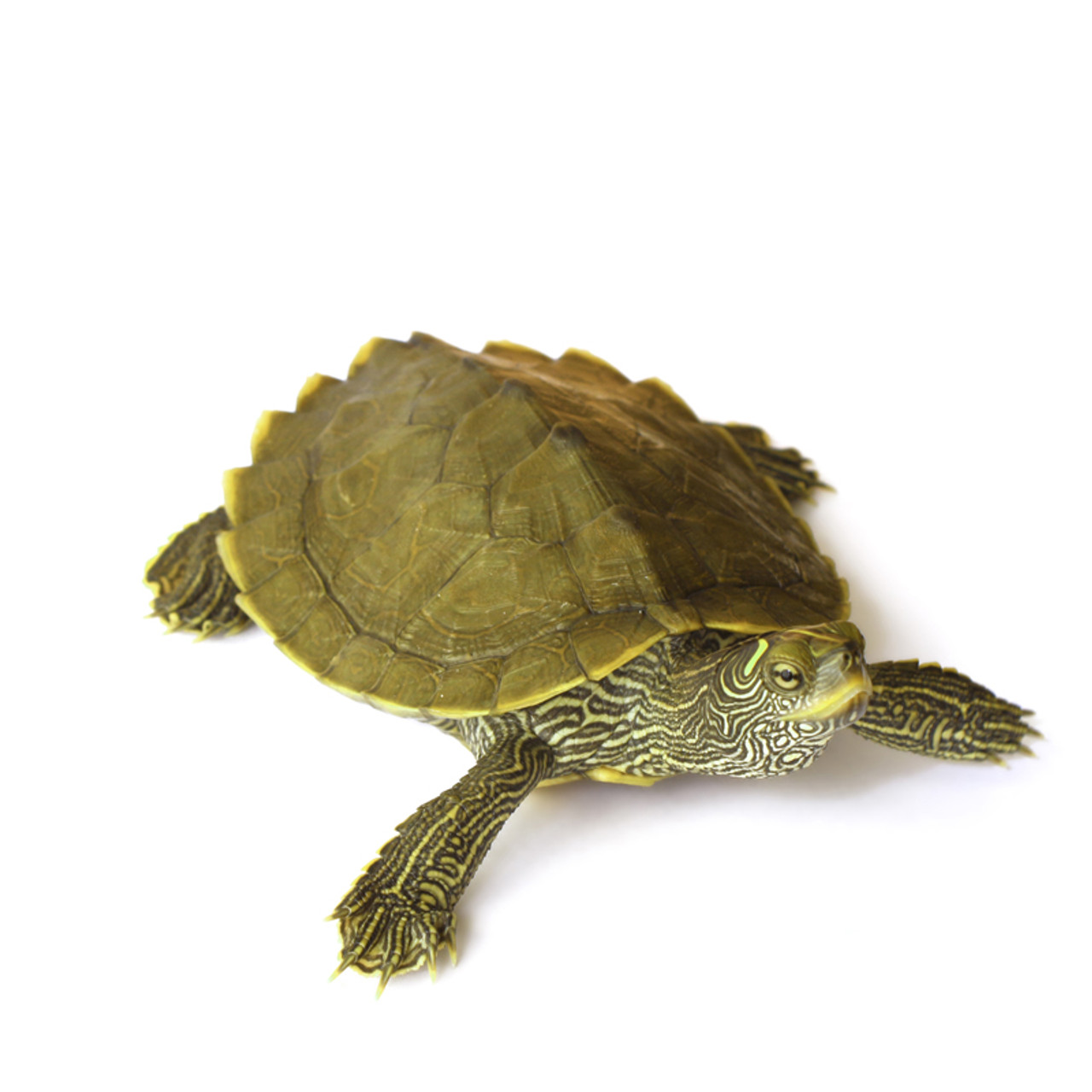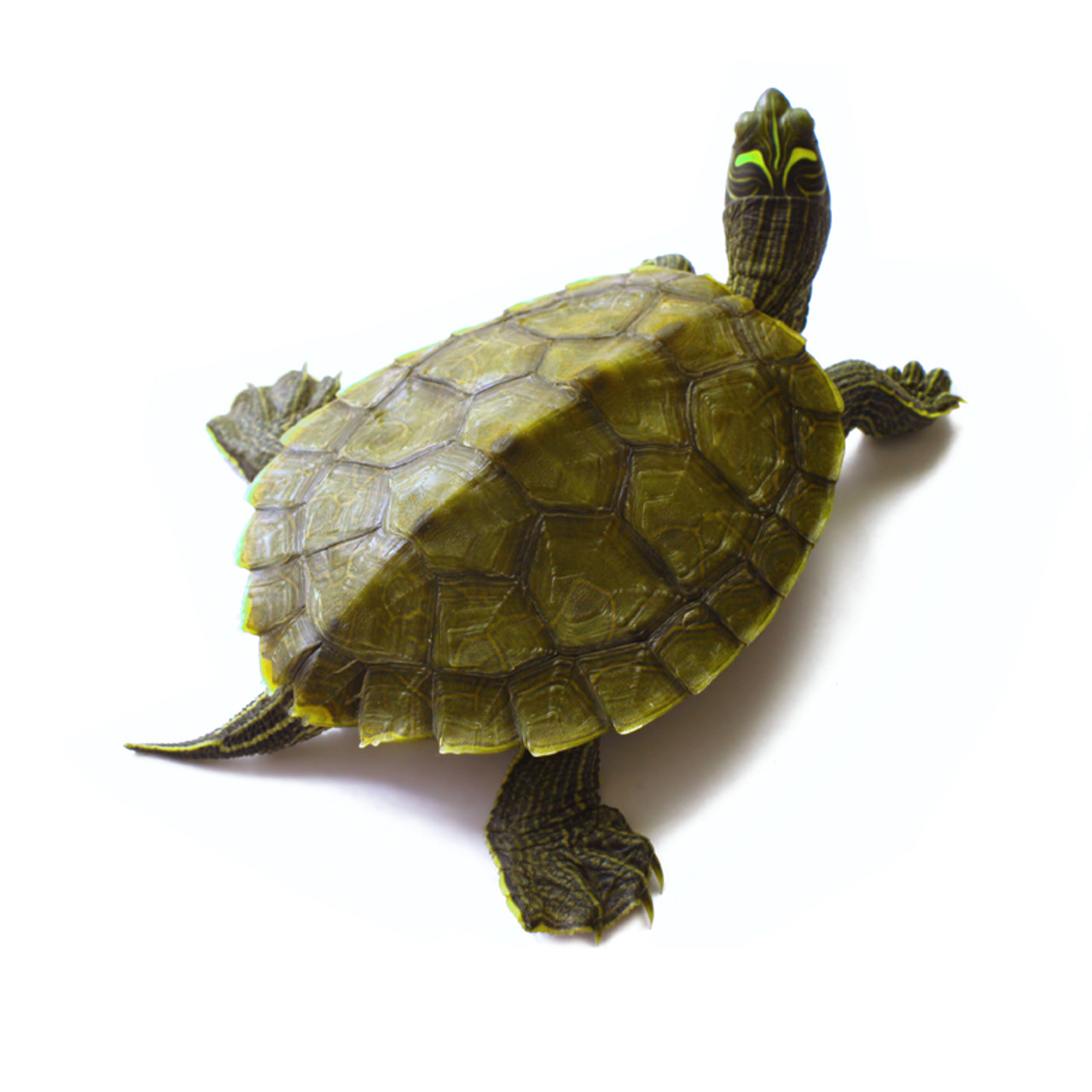Product Description
Overview:
The Mississippi Map Turtle, named for the map-like patterns on its shell, is a small to medium-sized freshwater species native to the Mississippi River and its tributaries. Known for their distinctive dorsal ridge (keel) and vibrant markings, they are active swimmers and baskers. These turtles are well-suited for intermediate keepers due to their need for clean water and specific habitat requirements.
Quick Facts:
- Size: Males 3.5-5 inches; females 6-10 inches.
- Lifespan: 20-30+ years with proper care.
- Temperament: Shy but active; males are more skittish than females.
- Activity Level: Highly active swimmers and frequent baskers.
- Diet: Omnivorous with a focus on protein in juveniles and more vegetation in adults.
Fun Facts:
- The “map” in their name refers to the intricate lines on their carapace, resembling topographic maps.
- Mississippi Map Turtles are part of the “sawback” group, thanks to their prominent keel running down their shell.
- They are excellent swimmers and thrive in tanks with plenty of open swimming space.















